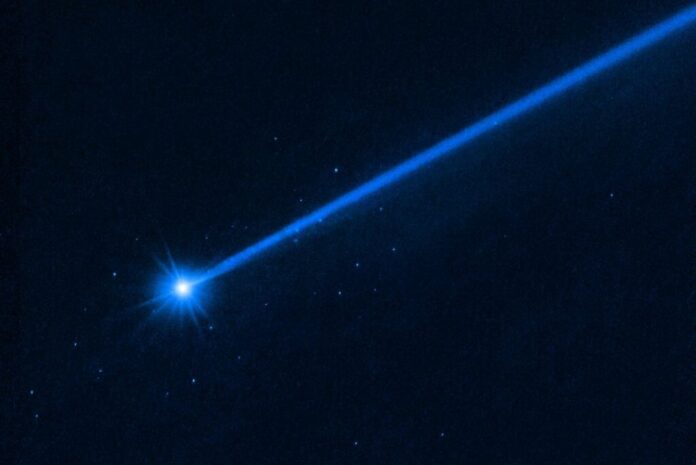When a NASA spacecraft successfully knocked an asteroid off course last year it sent dozens of boulders skittering into space, images from the Hubble telescope showed on Thursday.
NASA’s fridge-sized DART probe smashed into the pyramid-sized, rugby ball-shaped asteroid Dimorphos roughly 11 million kilometers (6.8 million miles) from Earth in September last year.
The spacecraft knocked the asteroid significantly off course in the first-ever such test of Earth’s planetary defenses.
New images taken by the Hubble Space Telescope show that the collision also sent 37 boulders—ranging from one meter (three feet) to seven meters (22 feet) across—floating into the cosmos.
They represent around two percent of the boulders that were already scattered across the surface of the loosely-held-together asteroid, scientists estimated in a new study.
The finding suggests that possible future missions to divert life-threatening asteroids heading towards Earth could also spray off boulders in our direction.
But these particular rocks do not pose any threat to Earth—indeed they have barely gone anywhere.
They are drifting away from Dimorphos at around a kilometer (half a mile) per hour—roughly the speed a giant tortoise walks, Hubble said in a statement.
The boulders are moving so slowly that the European Space Agency’s Hera mission—which is due to arrive at the asteroid in late 2026 to inspect the damage—will even be able to take a look at them.
“The boulder cloud will still be dispersing when Hera arrives,” said David Jewitt, a planetary scientist at the University of California at Los Angeles and lead author of the new study.
“It’s like a very slowly expanding swarm of bees,” he said.
The “spectacular observation” by Hubble “tells us for the first time what happens when you hit an asteroid and see material coming out,” he added.
“The boulders are some of the faintest things ever imaged inside our solar system.”
The dispersal of the boulders indicates that DART left a crater roughly 50 meters (160 feet) wide on Dimorphos, according to Jewitt. The whole asteroid is 170 meters across.
The scientists plan to continue following the boulders to work out their trajectory and determine how exactly they launched off the surface.
The study was published in the Astrophysical Journal Letters.
Reference:
David Jewitt et al, The Dimorphos Boulder Swarm, The Astrophysical Journal Letters (2023). DOI: 10.3847/2041-8213/ace1ec
